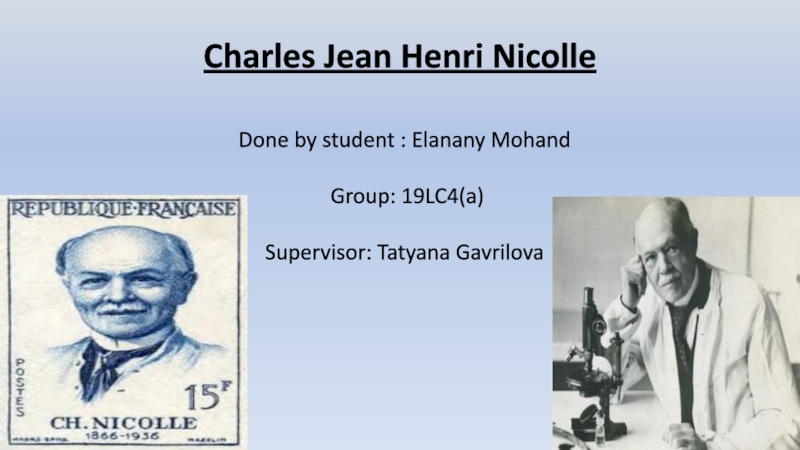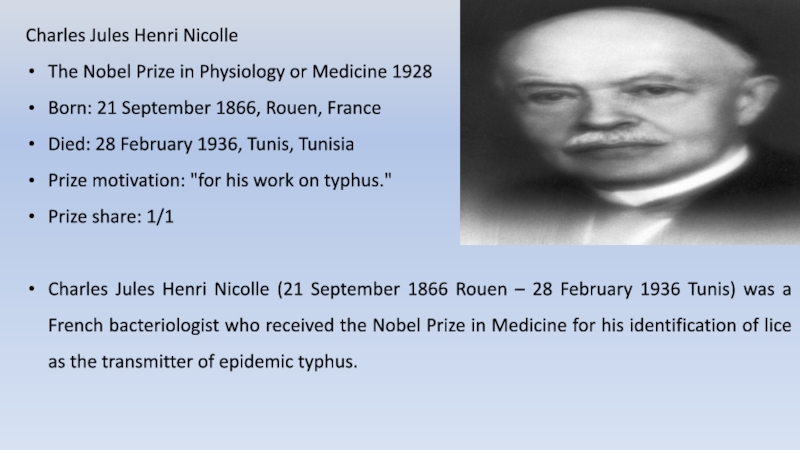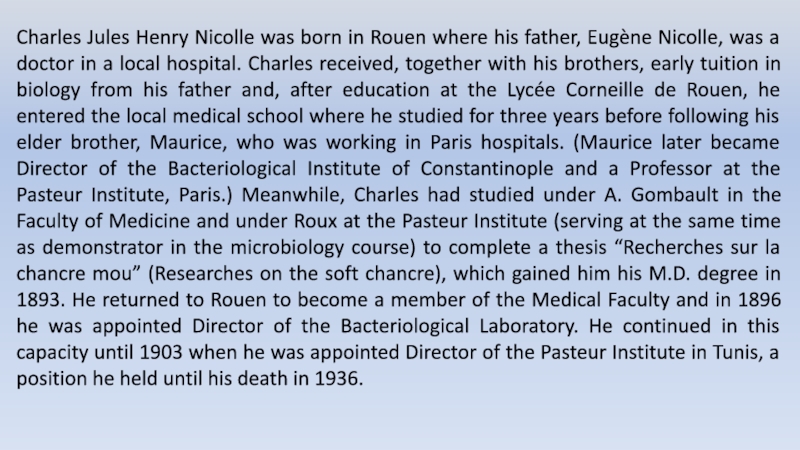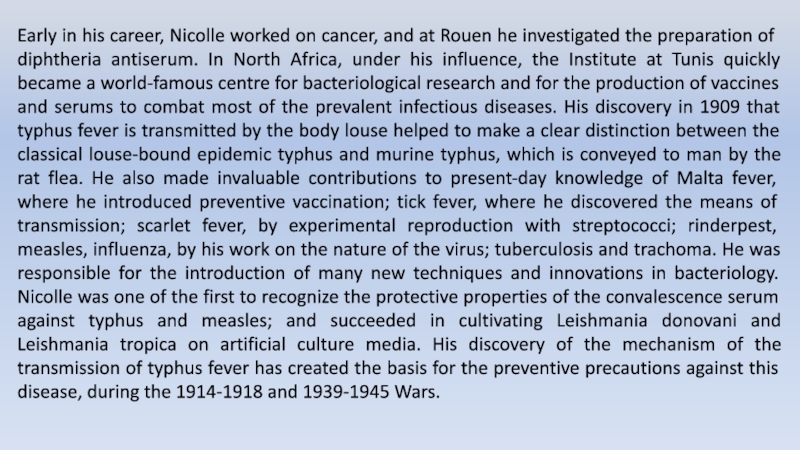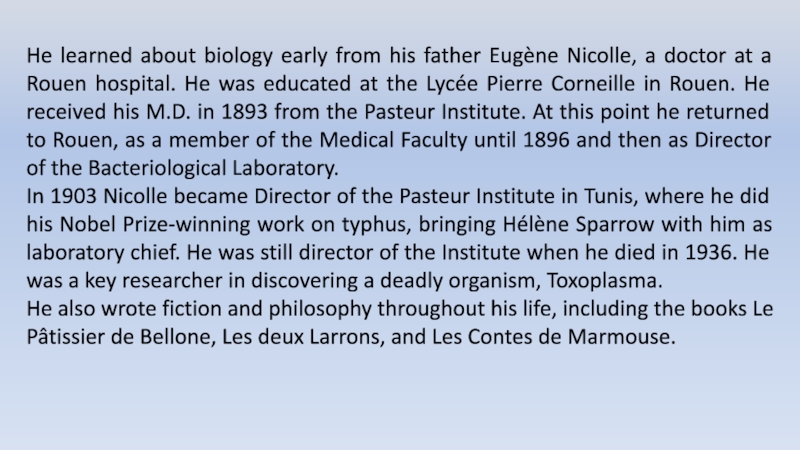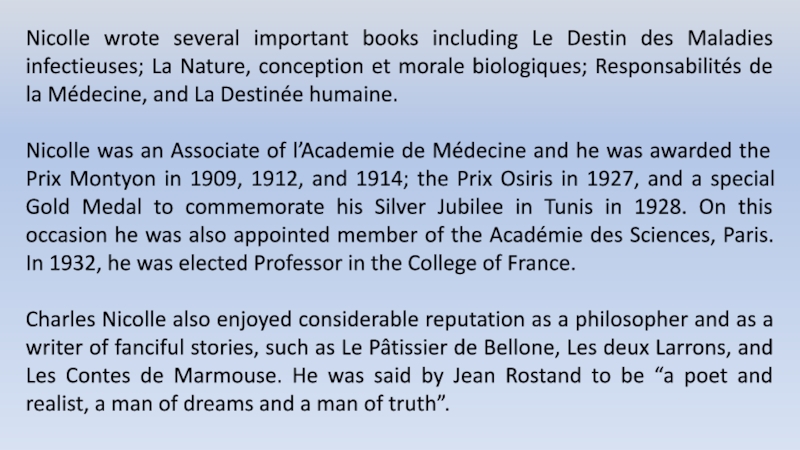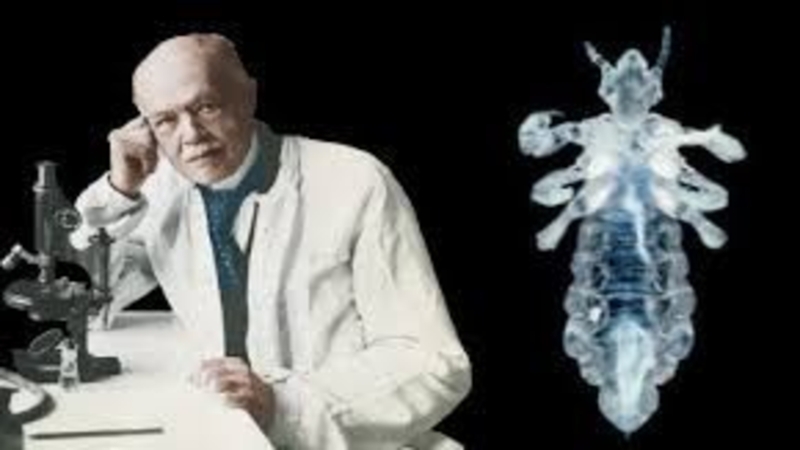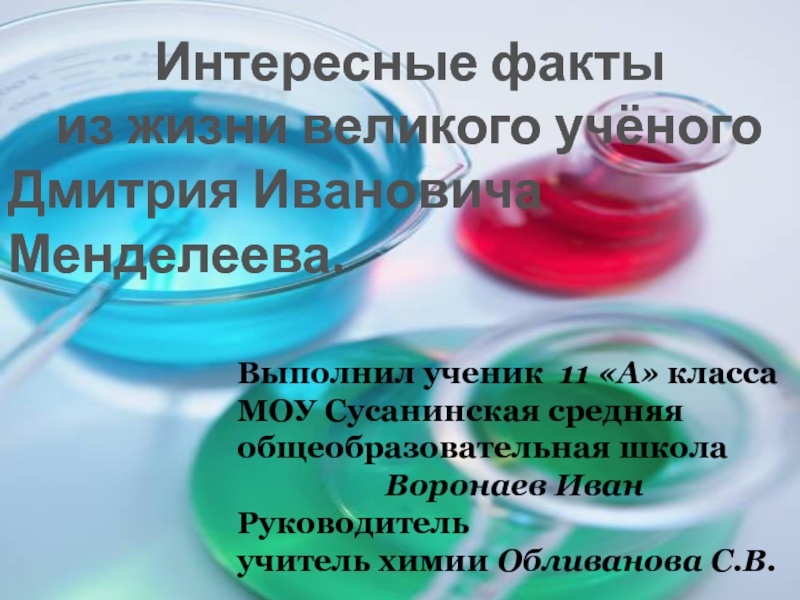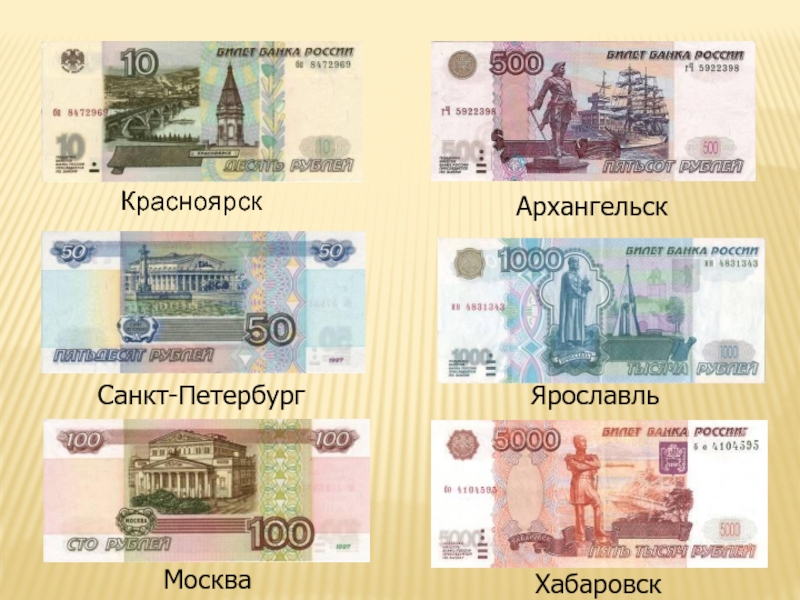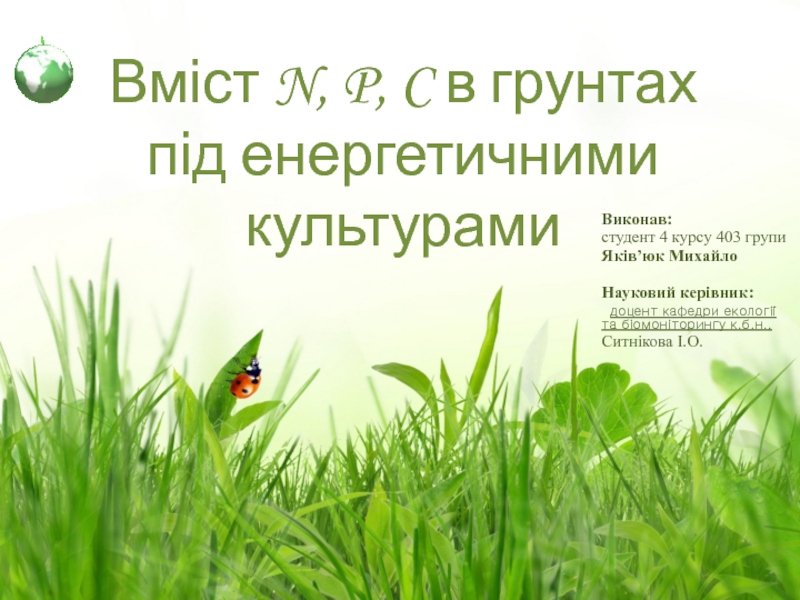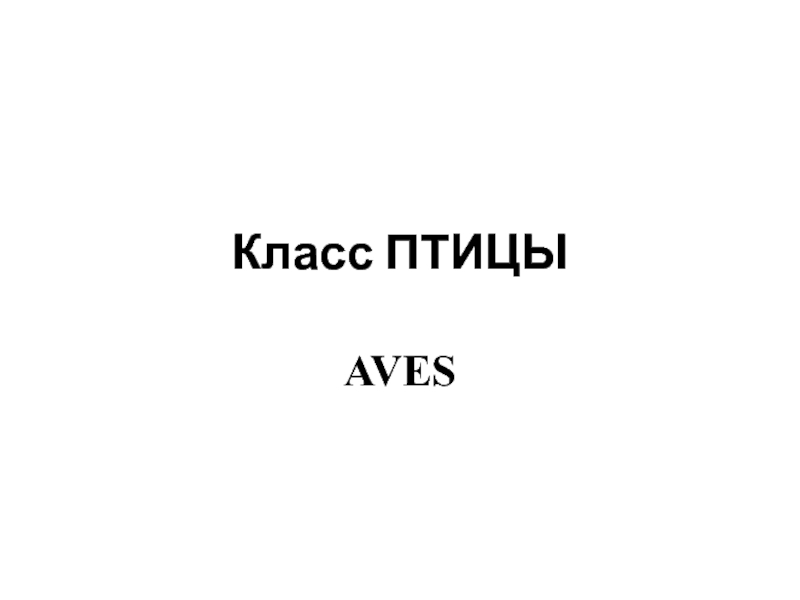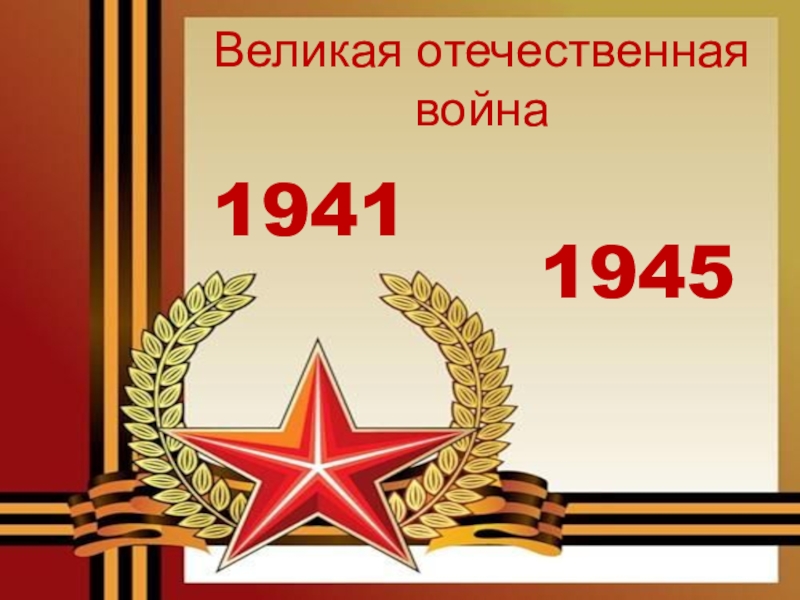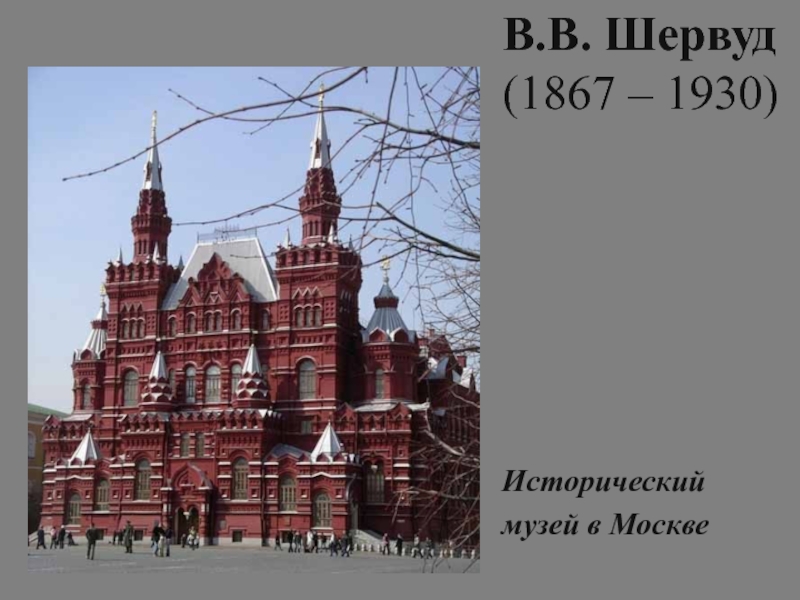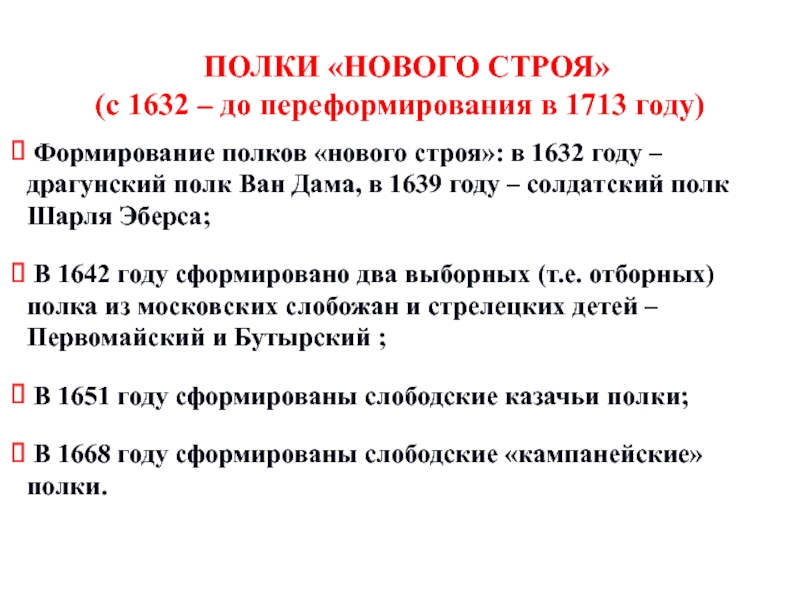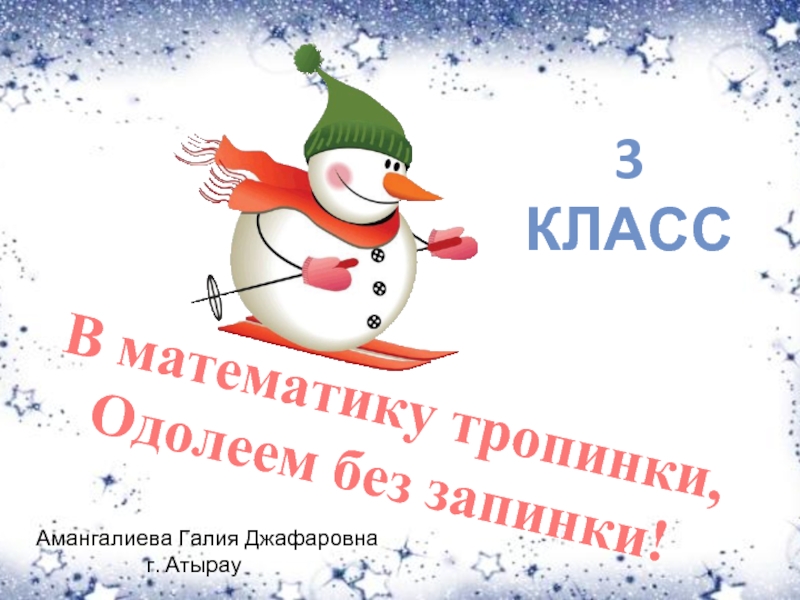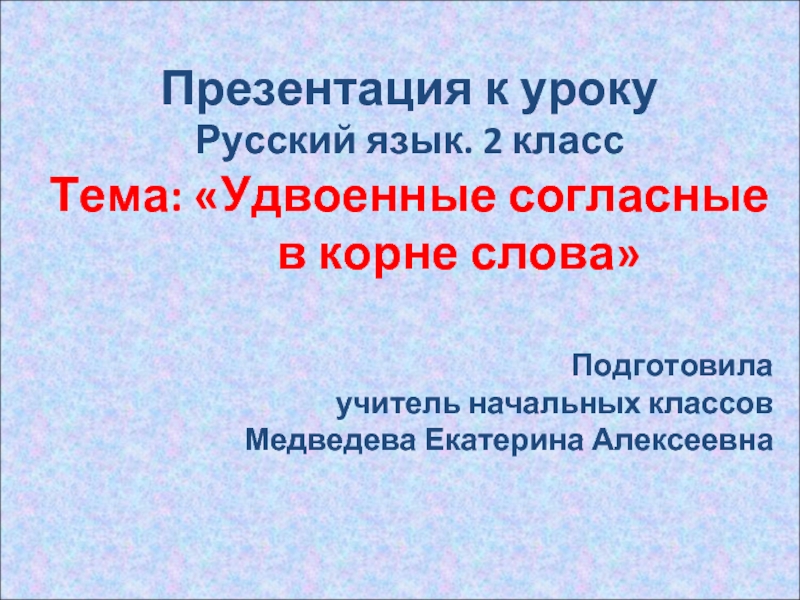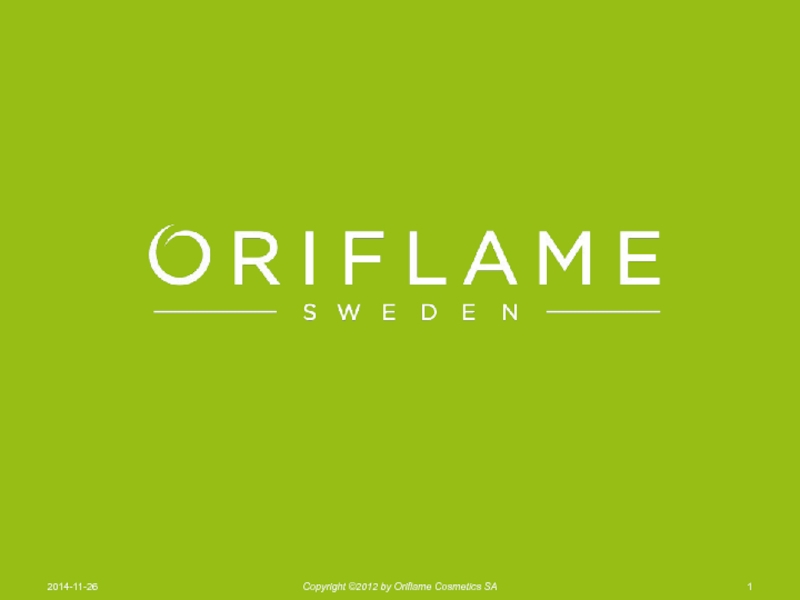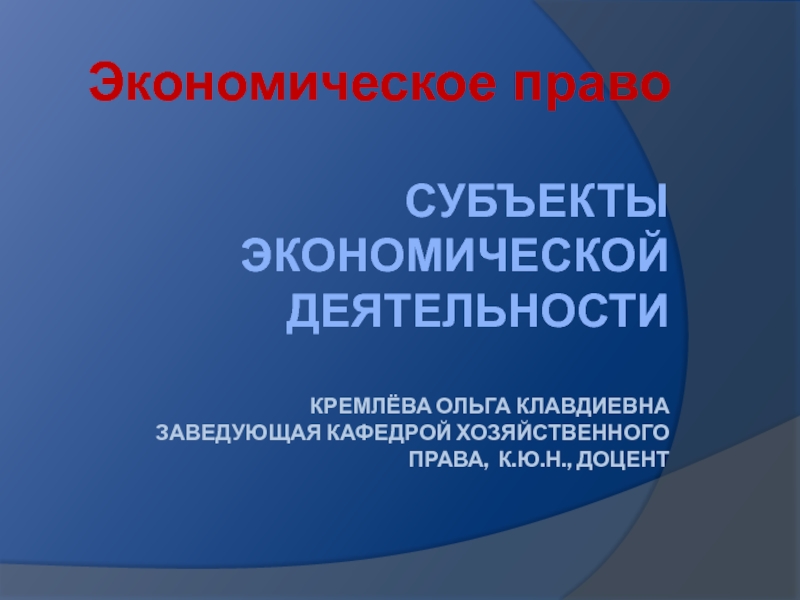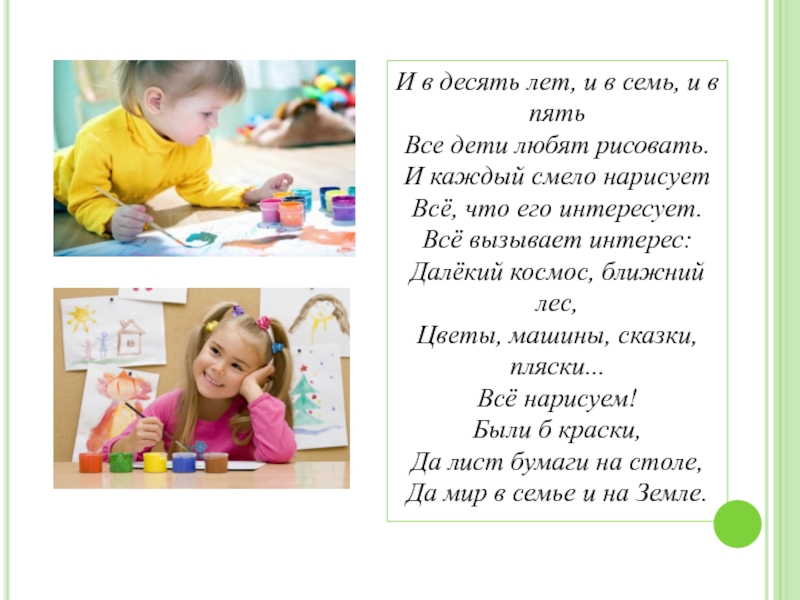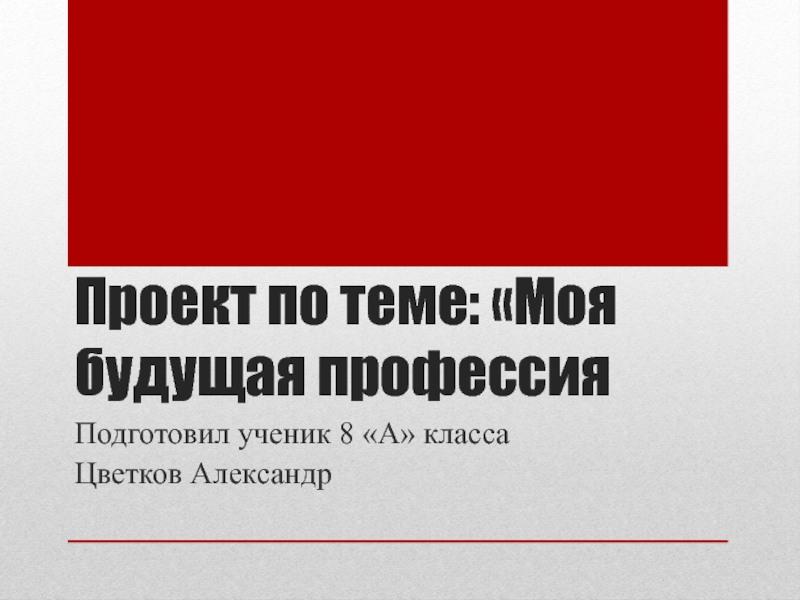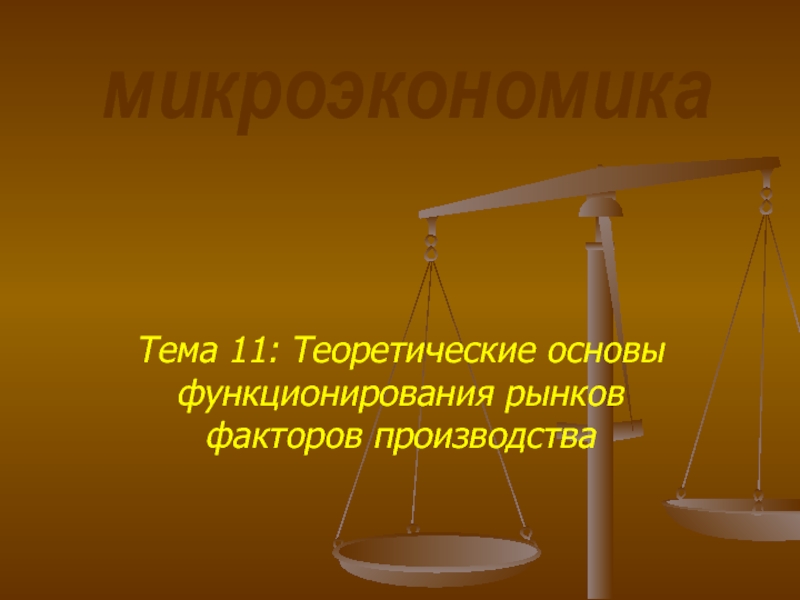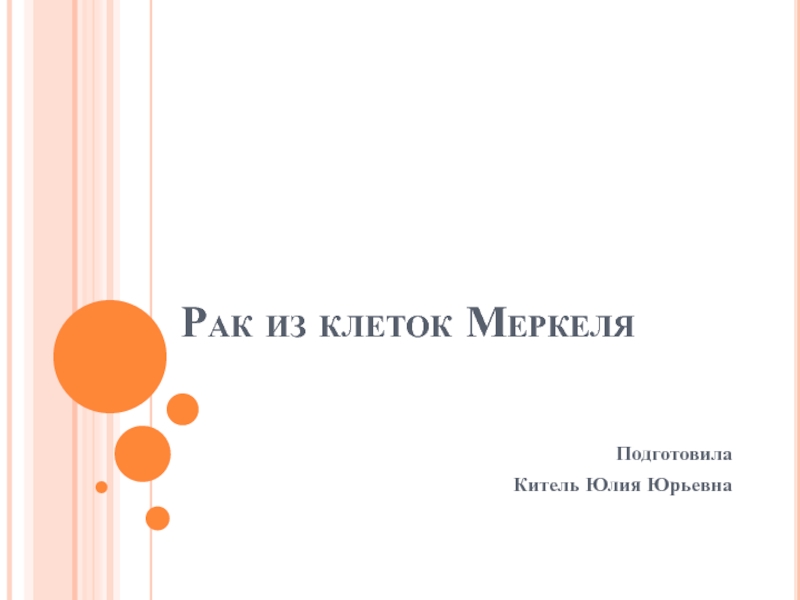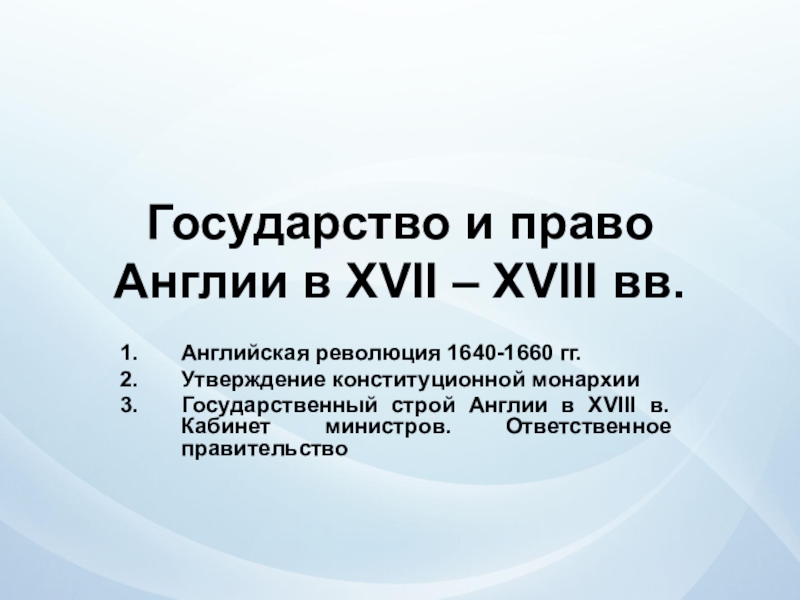Разделы презентаций
- Разное
- Английский язык
- Астрономия
- Алгебра
- Биология
- География
- Геометрия
- Детские презентации
- Информатика
- История
- Литература
- Математика
- Медицина
- Менеджмент
- Музыка
- МХК
- Немецкий язык
- ОБЖ
- Обществознание
- Окружающий мир
- Педагогика
- Русский язык
- Технология
- Физика
- Философия
- Химия
- Шаблоны, картинки для презентаций
- Экология
- Экономика
- Юриспруденция
Charles Jean Henri Nicolle Done by student : Elanany Mohand Group:
Содержание
- 1. Charles Jean Henri Nicolle Done by student : Elanany Mohand Group:
- 2. Charles Jules Henri NicolleThe Nobel Prize in
- 3. Charles Jules Henry Nicolle was born in
- 4. Early in his career, Nicolle worked on
- 5. He learned about biology early from his
- 6. Nicolle wrote several important books including Le
- 7. Слайд 7
- 8. AccomplishmentsNicolle's major accomplishments in bacteriology and parasitology
- 9. Discovery of the vectorNicolle's discovery came about
- 10. Attempt at a vaccineNicolle surmised that he
- 11. Скачать презентанцию
Charles Jules Henri NicolleThe Nobel Prize in Physiology or Medicine 1928Born: 21 September 1866, Rouen, FranceDied: 28 February 1936, Tunis, TunisiaPrize motivation: "for his work on typhus."Prize share: 1/1Charles Jules Henri
Слайды и текст этой презентации
Слайд 2Charles Jules Henri Nicolle
The Nobel Prize in Physiology or Medicine
1928
Born: 21 September 1866, Rouen, France
Died: 28 February 1936, Tunis,
TunisiaPrize motivation: "for his work on typhus."
Prize share: 1/1
Charles Jules Henri Nicolle (21 September 1866 Rouen – 28 February 1936 Tunis) was a French bacteriologist who received the Nobel Prize in Medicine for his identification of lice as the transmitter of epidemic typhus.
Слайд 3Charles Jules Henry Nicolle was born in Rouen where his
father, Eugène Nicolle, was a doctor in a local hospital.
Charles received, together with his brothers, early tuition in biology from his father and, after education at the Lycée Corneille de Rouen, he entered the local medical school where he studied for three years before following his elder brother, Maurice, who was working in Paris hospitals. (Maurice later became Director of the Bacteriological Institute of Constantinople and a Professor at the Pasteur Institute, Paris.) Meanwhile, Charles had studied under A. Gombault in the Faculty of Medicine and under Roux at the Pasteur Institute (serving at the same time as demonstrator in the microbiology course) to complete a thesis “Recherches sur la chancre mou” (Researches on the soft chancre), which gained him his M.D. degree in 1893. He returned to Rouen to become a member of the Medical Faculty and in 1896 he was appointed Director of the Bacteriological Laboratory. He continued in this capacity until 1903 when he was appointed Director of the Pasteur Institute in Tunis, a position he held until his death in 1936.Слайд 4Early in his career, Nicolle worked on cancer, and at
Rouen he investigated the preparation of diphtheria antiserum. In North
Africa, under his influence, the Institute at Tunis quickly became a world-famous centre for bacteriological research and for the production of vaccines and serums to combat most of the prevalent infectious diseases. His discovery in 1909 that typhus fever is transmitted by the body louse helped to make a clear distinction between the classical louse-bound epidemic typhus and murine typhus, which is conveyed to man by the rat flea. He also made invaluable contributions to present-day knowledge of Malta fever, where he introduced preventive vaccination; tick fever, where he discovered the means of transmission; scarlet fever, by experimental reproduction with streptococci; rinderpest, measles, influenza, by his work on the nature of the virus; tuberculosis and trachoma. He was responsible for the introduction of many new techniques and innovations in bacteriology. Nicolle was one of the first to recognize the protective properties of the convalescence serum against typhus and measles; and succeeded in cultivating Leishmania donovani and Leishmania tropica on artificial culture media. His discovery of the mechanism of the transmission of typhus fever has created the basis for the preventive precautions against this disease, during the 1914-1918 and 1939-1945 Wars.Слайд 5He learned about biology early from his father Eugène Nicolle,
a doctor at a Rouen hospital. He was educated at
the Lycée Pierre Corneille in Rouen. He received his M.D. in 1893 from the Pasteur Institute. At this point he returned to Rouen, as a member of the Medical Faculty until 1896 and then as Director of the Bacteriological Laboratory.In 1903 Nicolle became Director of the Pasteur Institute in Tunis, where he did his Nobel Prize-winning work on typhus, bringing Hélène Sparrow with him as laboratory chief. He was still director of the Institute when he died in 1936. He was a key researcher in discovering a deadly organism, Toxoplasma.
He also wrote fiction and philosophy throughout his life, including the books Le Pâtissier de Bellone, Les deux Larrons, and Les Contes de Marmouse.
Слайд 6Nicolle wrote several important books including Le Destin des Maladies
infectieuses; La Nature, conception et morale biologiques; Responsabilités de la
Médecine, and La Destinée humaine.Nicolle was an Associate of l’Academie de Médecine and he was awarded the Prix Montyon in 1909, 1912, and 1914; the Prix Osiris in 1927, and a special Gold Medal to commemorate his Silver Jubilee in Tunis in 1928. On this occasion he was also appointed member of the Académie des Sciences, Paris. In 1932, he was elected Professor in the College of France.
Charles Nicolle also enjoyed considerable reputation as a philosopher and as a writer of fanciful stories, such as Le Pâtissier de Bellone, Les deux Larrons, and Les Contes de Marmouse. He was said by Jean Rostand to be “a poet and realist, a man of dreams and a man of truth”.
Слайд 8Accomplishments
Nicolle's major accomplishments in bacteriology and parasitology were:
The discovery of
the transmission method of typhus fever
The introduction of a vaccination
for Malta feverThe discovery of the transmission method of tick fever
His studies of cancer, scarlet fever, rinderpest, measles, influenza, tuberculosis and trachoma.
Identification of the parasitic organism Toxoplasma gondii within the tissues of the gundi (Ctenodactylus gundi).
During his life Nicolle wrote a number of non-fiction and bacteriology books, including Le Destin des Maladies infectieuses; La Nature, conception et morale biologiques; Responsabilités de la Médecine, and La Destinée humaine.
Слайд 9Discovery of the vector
Nicolle's discovery came about first from his
observation that, while epidemic typhus patients were able to infect
other patients inside and outside the hospital, and their very clothes seemed to spread the disease, they were no longer infectious when they had had a hot bath and a change of clothes. Once he realized this, he reasoned that it was most likely that lice were the vector for epidemic typhus.In June 1909 Nicolle tested his theory by infecting a chimpanzee with typhus, retrieving the lice from it, and placing it on a healthy chimpanzee. Within 10 days the second chimpanzee had typhus as well. After repeating his experiment he was sure of it: lice were the carriers.
Further research showed that the major transmission method was not louse bites but excrement: lice infected with typhus turn red and die after a couple of weeks, but in the meantime they excrete a large number of microbes. When a small quantity of this is rubbed on the skin or eye, an infection occurs.
Слайд 10Attempt at a vaccine
Nicolle surmised that he could make a
simple vaccine by crushing up the lice and mixing it
with blood serum from recovered patients. He first tried this vaccine on himself, and when he stayed healthy he tried it on a few children (because of their better immune systems), who developed typhus but recovered.He did not succeed in his effort to develop a practical vaccine. The next step would be taken by Rudolf Weigl in 1930.
